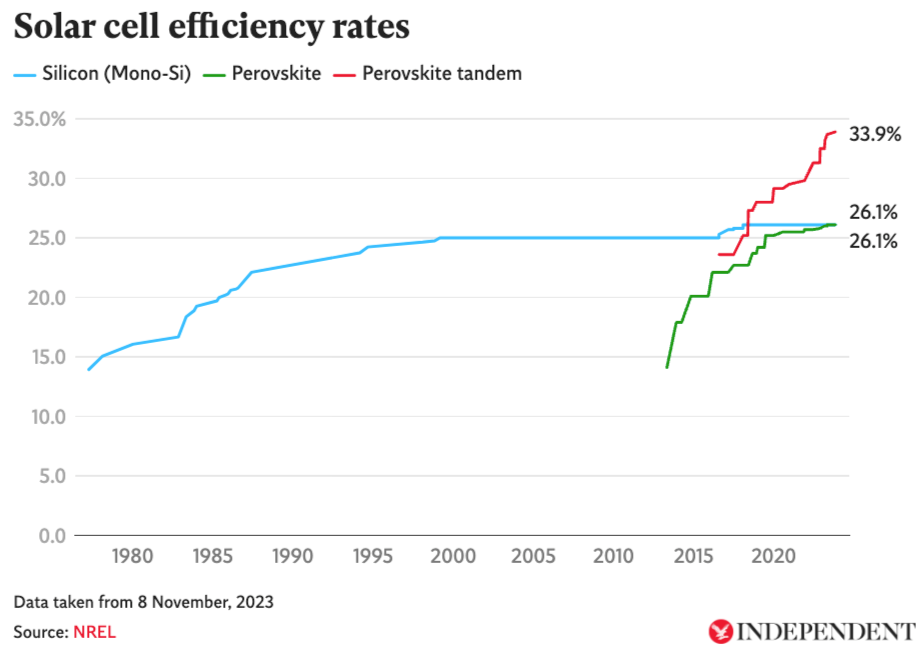More Power from the Sun
More Power from the Sun
Solar photovoltaic solar panels are sensational. They convert sunlight into electricity without the whir or waste heat of an engine.
Silicon solar panels have efficiencies as high as 26% and last for decades. Happy? Yes, but wouldn’t be awesome if PV could harness even more power from the Sun?
The truth is that the stupendous global success of silicon solar panels in the past twenty years has little to do with the modest efficiency gains of silicon PV and more with dramatic reductions in manufacturing costs. Still, what if a leap in efficiency was possible?
Imagine a solar panel that could harness more power from the Sun. That’s where perovskite-silicon tandem cells come in. These innovative cells have achieved efficiencies of 33.9%, surpassing the 26% efficiency of traditional silicon solar panels.

Chart by The Independent, adapted from data by NREL.
While the promise of perovskite technology is undeniable, it’s important to acknowledge the challenges that still need to be overcome to become commercially viable. These hurdles could potentially be fatal flaws, or they could be solved, ushering in an era of significantly more efficient solar energy.
The stories of perovskite photovoltaics or lithium-ion batteries prove that saving the planet remains a team effort. Not the accomplishments of a single person or company.
Solutions for our energy transition come from many people and every corner. For example, the recipients of the 2019 Nobel Prize in Chemistry, John B. Goodenough, M. Stanley Whittingham and Akira Yoshin, did not anticipate that their contributions to the lithium-ion battery would create the electric vehicle revolution.
